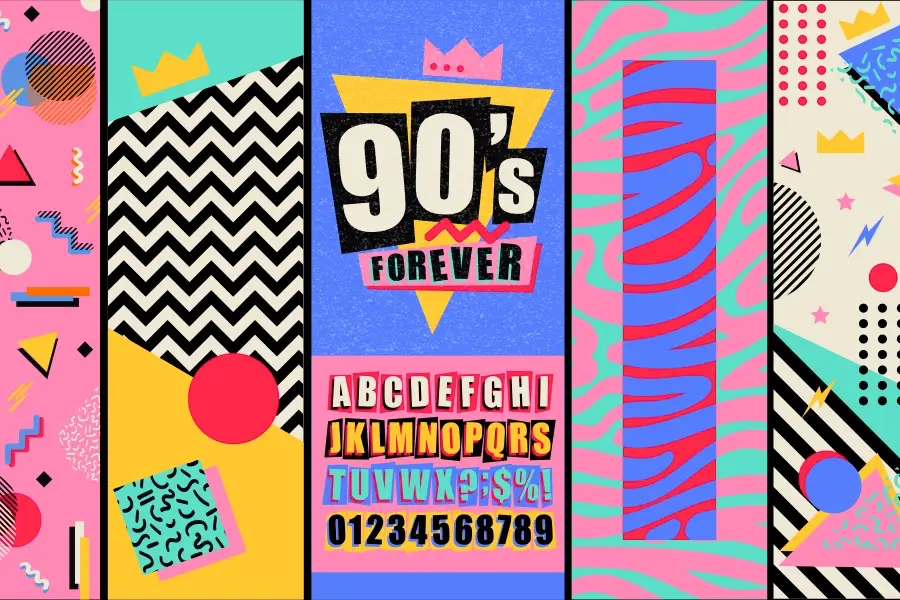
PROFESSIONAL DEVELOPMENT

Storytelling is an essential part of our world and is a major creative element in books, movies, and television shows. Every part of your own life can be broken down into a story, and those stories can be told through design. A graphic designer tells a story with their design to create a finished product that resonates with the audience.
How does a graphic designer tell a story? There are several different facets of storytelling that a designer can use during the process. This even extends beyond the actual design itself. For example, the planning stages need to include the story, much in the same way that a novelist might use an outline or a screenwriter might use a storyboard.
From the perspective of a casual observer, it may appear that a designer only creates an image. But that image conveys more than a frozen snap of time. Depending on what you’re designing, there may be many images involved. For example, if you’re a graphic designer working on a new web property, there will be several aspects that you need to consider. Even in the case of a single image, like a logo, the brand’s story remains central to the design.
When you work directly with a client, your ability to capture their story is important. The client may not understand the nuance of design, but they understand ROI. They want to hear how your design will impact their audience and strengthen their brand. You can explain how your choice of fonts and layout will be visually pleasing for the audience, but it sounds hollow. On the other hand, it would be far more engaging if you were to explain that the bold font and color palette convey trust for your target audience and show them how the layout speaks to their customer persona.
The client needs to see that you not only understand their company or brand but that you also understand the key audience they’re trying to capture. Unless the client has a design background, they likely won’t appreciate a discussion that only centers on design techniques. Even if they do have a design background, sharing the story behind your design, and your purpose in the creation, will show them more about the process and the finished product.
Your client needs the story, and that story should include who they are and what their mission is. It should make their marketing position clear and highlight why they are the best company for their target customer. The story leads the audience through the process, highlights the emotions the design works to engage, and offers them an advantage over their current design. There’s no reason for them to make design changes unless the changes enhance their position or improve their brand in some way.
Every client is different, and each story will be unique. What you’re showcasing in your communications is that you understand their company, brand, and position—and prove that you are the best person to convey their story in design.
Every design project has a story. It’s not necessarily as cut and dry as fiction where the story is written out in prose. A great written story includes all the necessary elements, but it doesn’t always tell the audience exactly what they are. Instead, it evokes feelings through the actions and reactions of the characters and through careful descriptions that set the mood and tone, and fill in the plot. When the audience reads the work, they will often overlook “Easter eggs” that then become “aha moments” later. They’re allowed to engage with the story because their mind figures out these descriptive clues as they read.
In design, the words are limited. You’re telling the story through images rather than words, but it uses a lot of the same premises. You don’t want your design to be so obvious that it basically beats the audience over the head with the messaging you want to convey. All the pieces work together to bring them to the story.
Before beginning a design piece, you need to clearly understand your client and their customer. Then you need to crystalize their story. Is their story one of hope, action, joy, intrigue? These sound like hollow descriptions but they charge your design and will help you to fully understand where the company is coming from and what their branding is so that you can capture it.
Sometimes you’ll work on a design where all the elements haven’t been working toward the same story. This can happen when multiple people have put together aspects of the design over many years. It almost feels like a “Frankenstein effect” because the elements don’t feel like they belong to the same body of work. And if you can see that something is off, chances are the audience will see something is off. These types of projects can be difficult because the client may be attached to aspects of the design that simply don’t work for the current story arc. A complete rebranding is usually the best method for dealing with these types of issues, but sometimes you can think outside the box to save aspects the client is attached to, perhaps in a history section of the company or in some other way that notes the evolution of the story and its design.
The overall design should include all the elements of the story you’ve built. This includes the words within your copy and how you’ve chosen to highlight them. The writer is often the one developing the actual content but it’s important that the designer and the writer are in sync with the story so that their elements work together seamlessly.
In a website, for example, every aspect of the site should lend itself to the same story. Colors, fonts, placement of buttons, images, and content should all work within the arc of the story. When all of this comes together, it improves user experience and ensures that the site is easily navigated and offers the best telling of the brand story.

The Art Career Project is a trusted resource for emerging and professional artists.